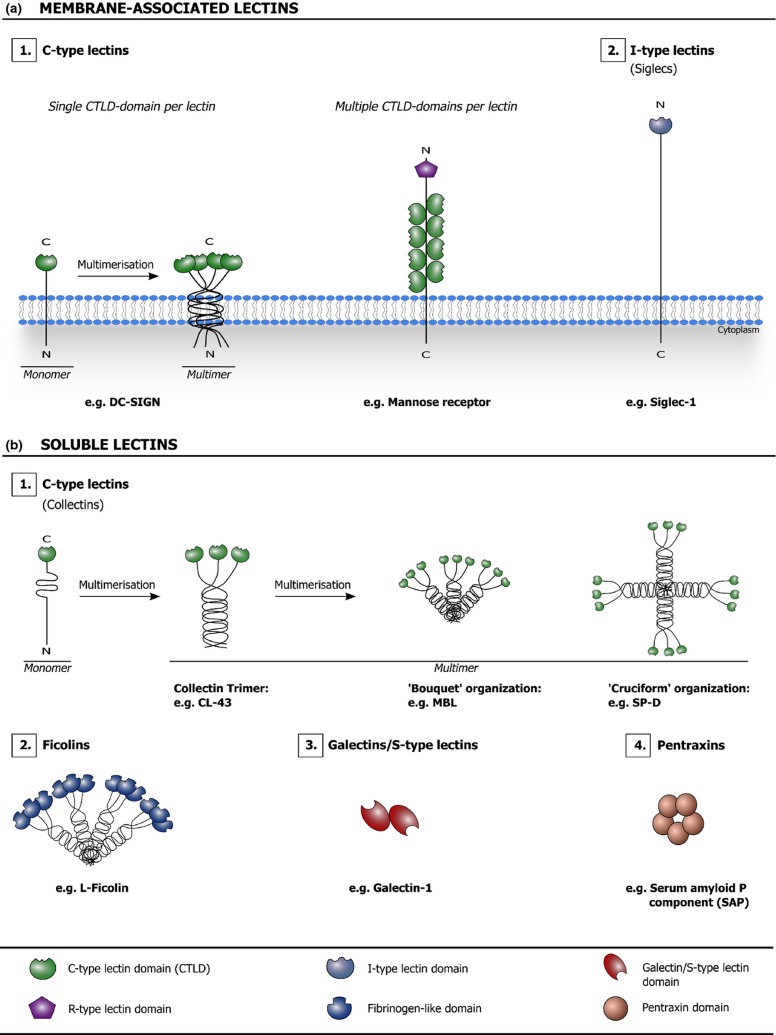Figure 3.
Schematic overview of different types of membrane-associated (a) and soluble (b) animal lectins that are considered in this review. The lectin domains are highlighted and listed in the key. C-type lectin/C-type lectin domain: Lectins are classified as C-type lectins based on their Ca2+-dependency and shared primary structure. In the C-type CRD, a Ca2+ ion is directly involved in carbohydrate binding by making coordination bonds to both the CRD surface and key hydroxyl groups of the carbohydrate. The C-type lectin family contains both membrane-associated (a.1) and soluble (b.1) lectins. The collectins are solubleC-type lectins characterized by the presence of collagen-like domains. R-type lectin domain: This term refers to a CRD that is structurally similar to the CRD in ricin, a toxin found in the plant Ricinus communis. I-type lectin/I-type lectin domain: I-type lectins are glycan-binding proteins that belong to the Ig superfamily, but are not antibodies or T-cell receptors. The ‘sialic acid-binding Ig-like lectin (siglec)’ family of membrane-associated lectins is currently the only well-characterized group of I-type lectins (a.2). Ficolin: Ficolins (b.2) are soluble lectins characterized by the presence of collagen-like domains and fibrinogen-like globular domains with a lectin activity. Galectin/S-type lectin (domain): Galectins (b.3) are soluble lectins that typically bind β-galactose-containing glycoconjugates and show primary structural homology in their CRDs. Galectins were initially referred to as S-type lectins to reflect their sulfhydryl dependency, the presence of cysteine residues and their solubility; however, at present, not all identified galectins fit this initial description anymore. Pentraxin/pentraxin domain: Pentraxins (b.4) are characterized by the presence of pentraxin domains, which contain an eight amino acid long conserved ‘pentraxin signature’ (HxCxS/TWxS, where x is any amino acid) and display an L-type (Legume-type) lectin fold. SAP is a soluble lectin that requires Ca2+ ions for carbohydrate ligand binding (adapted from Fujita, 2002; Varki et al., 2009; Bottazzi et al., 2010).

